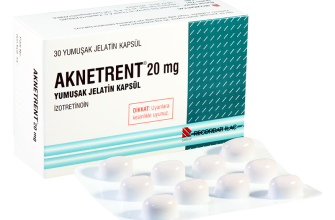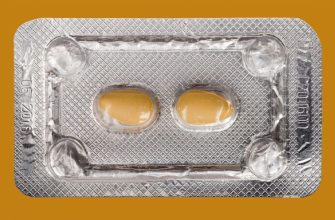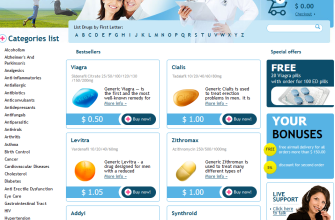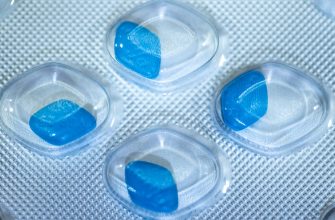You can open clindamycin capsules, but it’s important to do so with caution. The contents of these capsules are often in a powdered form, which can be mixed with food or liquid for easier ingestion, especially for those who have trouble swallowing pills.
Before making any changes to how you take your medication, consult a healthcare professional. They can provide personalized advice based on your specific condition and ensure that this method of administration won’t affect the medication’s effectiveness.
When considering opening the capsules, ensure that the method of mixing does not alter the absorption of clindamycin. Some people find that combining the powder with applesauce or yogurt works well, making it easier to take without losing any of the medication’s potency.
Keep in mind that altering any medication’s form can lead to variations in how it works in your body. Always monitor how you feel after taking it this way, and report any unusual side effects to your doctor.
- Can Clindamycin Capsules Be Opened?
- Understanding Clindamycin and Its Forms
- Reasons for Opening Clindamycin Capsules
- Dosage Flexibility
- Enhanced Absorption
- Potential Risks of Opening Clindamycin Capsules
- Altered Absorption
- Risk of Contamination
- Alternative Administration Methods for Clindamycin
- Consulting Healthcare Professionals About Clindamycin Use
Can Clindamycin Capsules Be Opened?
Clindamycin capsules should not be opened. The capsule’s design ensures proper delivery of the medication and protects it from degradation. Altering the capsule might affect the medication’s effectiveness and absorption. Always take clindamycin as directed by your healthcare provider.
If you have difficulty swallowing capsules, consult your doctor. They may suggest alternatives like liquid formulations that provide the same therapeutic benefits without compromising your treatment.
Never attempt to modify your medication without professional advice. Safety and effectiveness of the treatment depend on following the prescribed form. Your health care provider can provide the best options tailored to your needs.
Understanding Clindamycin and Its Forms
Clindamycin is available in several forms, each with specific uses and characteristics. The most common forms include capsules, topical gels, and injectable solutions. Understanding these options aids in selecting the right method for treatment.
- Capsules: These are often used for internal infections. They are designed for swallowing whole. Opening capsules to access the powder inside is typically not recommended, as it can alter the medication’s effectiveness and absorption.
- Topical gels and creams: Ideal for treating localized skin infections, these forms directly target the affected area. They are generally safe, easy to apply, and may cause fewer systemic side effects.
- Injectable solutions: Usually reserved for more severe infections that require rapid intervention. This method ensures direct delivery into the bloodstream, providing quick action against bacteria.
It’s essential to follow a healthcare provider’s advice regarding the appropriate form of clindamycin. Each form is formulated to meet specific therapeutic needs. Misusing them can lead to ineffective treatment or increased side effects.
Always consult with a healthcare professional before altering how you take clindamycin. This ensures you receive the best possible outcome while minimizing risks associated with improper use.
Reasons for Opening Clindamycin Capsules
Opening clindamycin capsules can be beneficial in specific situations. Individuals who have difficulty swallowing pills may find it easier to consume the medication when the contents are sprinkled over food or mixed with applesauce. This method ensures that the full dose is taken without the discomfort of swallowing a capsule whole.
Dosage Flexibility
Some healthcare providers recommend adjusting the dosage for certain patients, particularly children or those with swallowing difficulties. By opening the capsule, caregivers can provide a smaller portion of the medication, accommodating the patient’s needs while still ensuring effective treatment.
Enhanced Absorption
Mixing clindamycin powder with a soft food carrier can sometimes enhance palatability and improve absorption. This approach may help those with digestive issues who might struggle with the capsule form.
| Reason | Description |
|---|---|
| Difficulty Swallowing | Patients can sprinkle powder on food for easier consumption. |
| Adjusting Dosage | Caregivers can create smaller doses for children or sensitive patients. |
| Improved Absorption | Mixing with food may enhance the medication’s absorption in certain cases. |
Potential Risks of Opening Clindamycin Capsules
Avoid opening clindamycin capsules due to potential risks. This practice can alter the medication’s effectiveness and safety profile. Clindamycin is formulated for controlled release, and breaking the capsule can lead to improper dosing and increased side effects.
Altered Absorption
When a capsule is opened, the drug may be absorbed too quickly, resulting in higher peak concentrations in the bloodstream. This can increase the risk of adverse reactions like gastrointestinal disturbances or severe allergic responses. Maintaining the intended release mechanism ensures steady absorption, reducing the likelihood of such issues.
Risk of Contamination
Opening the capsule exposes the contents to air and potential contaminants. This exposure can compromise the drug’s integrity and lead to degradation. The powdered form may also be challenging to handle safely, increasing the chance of inhalation or skin irritation. To prevent these risks, always take clindamycin capsules as prescribed.
Alternative Administration Methods for Clindamycin
Crushing clindamycin capsules to mix with food or liquids is not recommended as it may alter the medication’s effectiveness. However, achieving the desired therapeutic effect can be explored through other methods. Your healthcare provider can guide you on the best approaches tailored to your needs.
If swallowing capsules poses a challenge, ask your doctor about the availability of liquid formulations. Clindamycin is available in a solution that can be easier to ingest and offers precise dosing. It is especially useful for patients who have difficulty swallowing pills.
For specific conditions, topical clindamycin products can serve as an alternative. These include gels and lotions designed for treating acne or skin infections. Applying these directly to the affected area may enhance efficacy and lower systemic side effects.
In some cases, healthcare providers might consider clindamycin phosphate injections for immediate treatment needs. This method allows for rapid delivery into the bloodstream, which can be crucial in severe infections.
Always consult with a healthcare professional before making any changes to your medication routine or exploring alternative administration methods. They can provide personalized advice based on your medical history and the specifics of your treatment plan.
Consulting Healthcare Professionals About Clindamycin Use
Discuss clindamycin with your healthcare provider before starting treatment. Clearly state any allergies or past reactions to antibiotics. This information is crucial for ensuring clindamycin is safe for you.
Ask about the appropriate dosage and frequency tailored to your condition. Dosage may vary based on the type of infection and individual health factors. Follow your provider’s specific instructions to promote optimal results.
Inquire about potential side effects and interactions with other medications. Clindamycin can cause gastrointestinal issues or skin reactions. Reporting any unusual symptoms immediately helps in managing side effects effectively.
Clarify whether clindamycin capsules can be opened or mixed with food, if you have difficulty swallowing. Your provider can advise on alternative forms or methods for administration, enhancing comfort during treatment.
Establish a plan for follow-up visits. Regular check-ins allow your healthcare provider to monitor your progress and make necessary adjustments to your treatment regimen.
Finally, always consult with your healthcare professional before making changes to your medication plan. Open communication ensures your treatment with clindamycin is both safe and effective for your specific needs.










